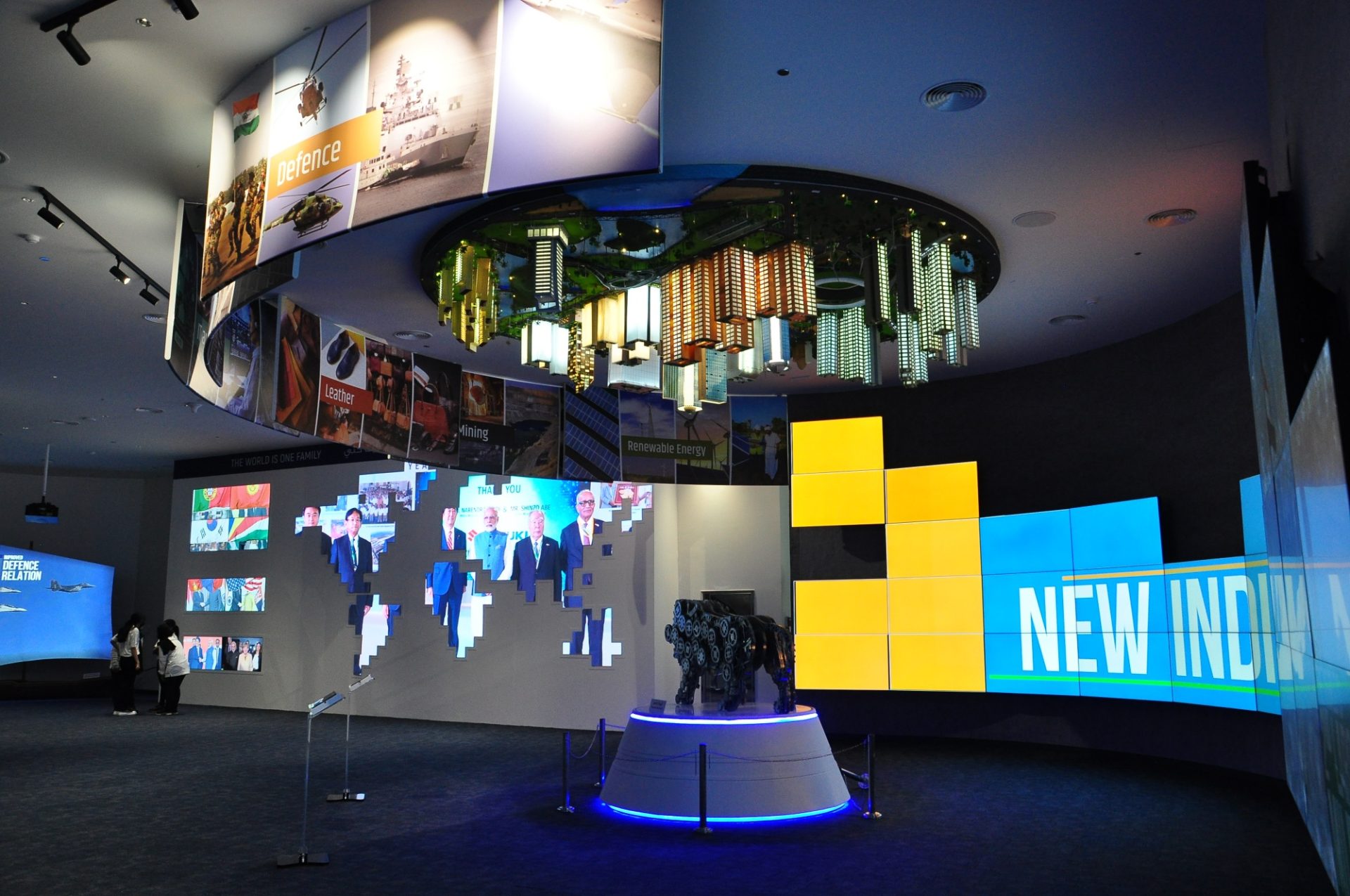India Pavilion uses Kinetic Architecture in its Façade
One of the largest pavilions at the Expo 2020 Dubai, the India Pavilion designed by C P Kukreja Architects intends to showcase the substantial growth of the country post-Independence.
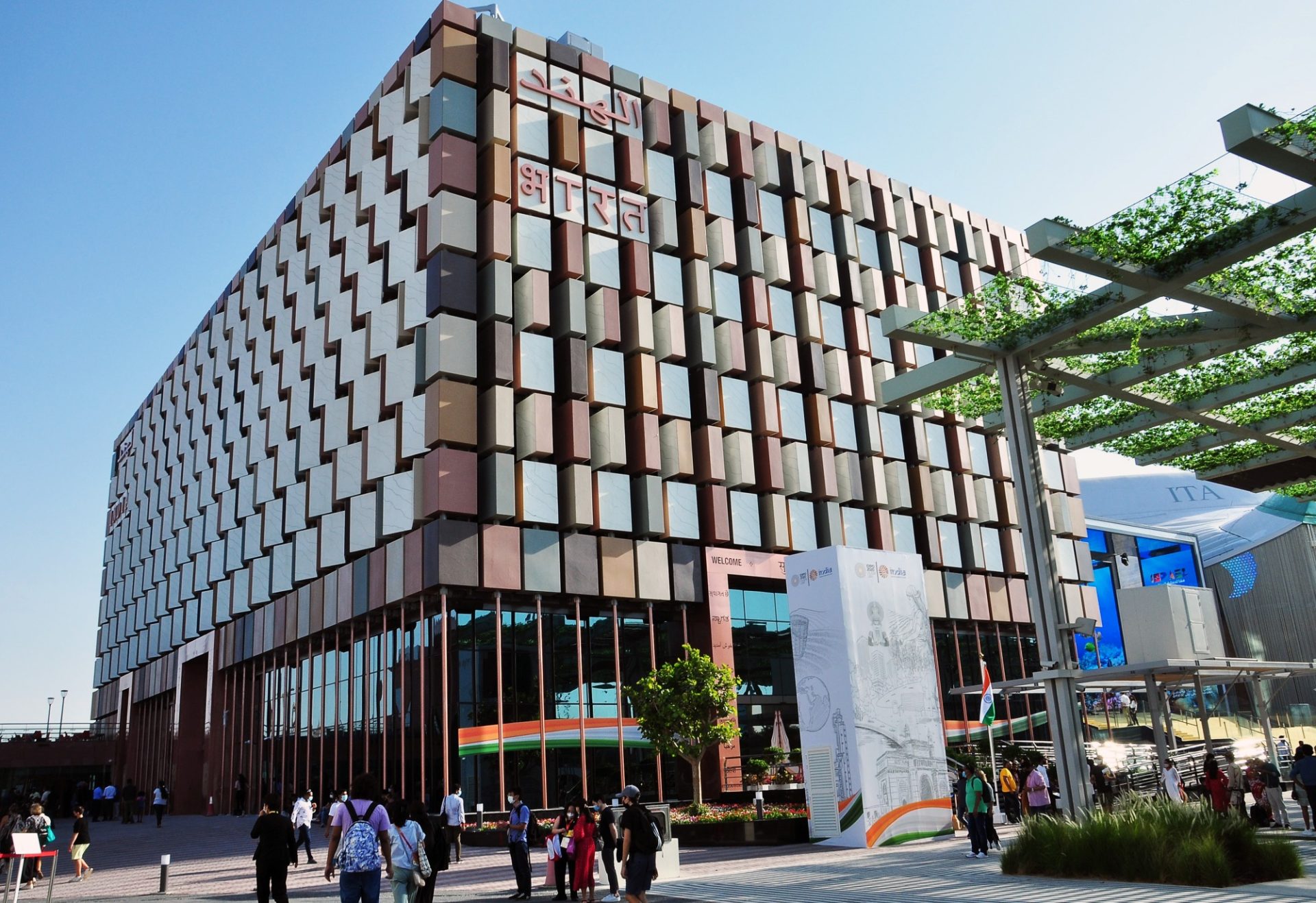 The India Pavilion will be among one of the three pavilions that will be retained for posterity in Dubai’s legacy phase as an Indian centre, and its outer façade is designed using kinetic architecture which celebrates India’s 75 years of Independence through storytelling while instilling emotions of pride and enthusiasm, according to the architects, C P Kukreja Architects (CPKA).
The India Pavilion will be among one of the three pavilions that will be retained for posterity in Dubai’s legacy phase as an Indian centre, and its outer façade is designed using kinetic architecture which celebrates India’s 75 years of Independence through storytelling while instilling emotions of pride and enthusiasm, according to the architects, C P Kukreja Architects (CPKA).
With an overarching theme of ‘Connecting Minds, Creating the Future’, the Dubai Expo 2020 is a platform promoting partnerships for innovation, inclusion, and understanding.
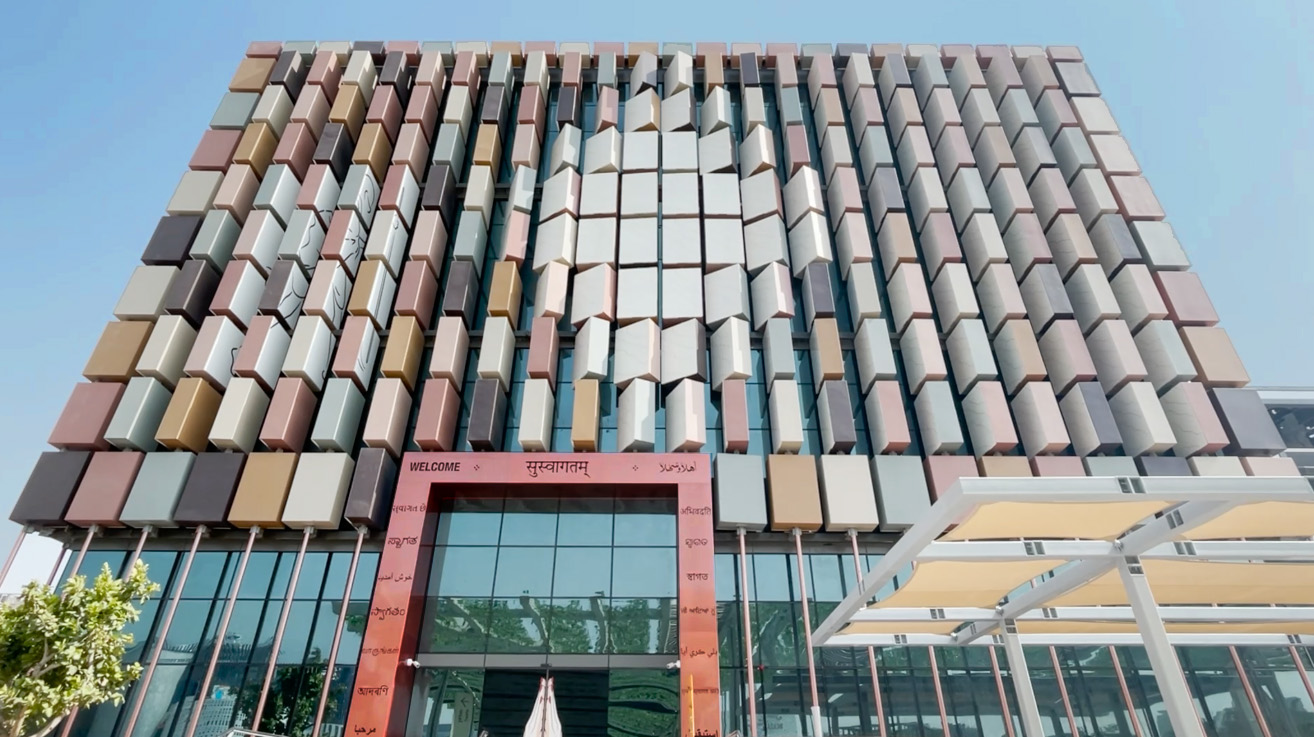 “The design for the India Pavilion seeks to exhibit the substantial growth the country has witnessed through the years after Independence, becoming a land of limitless opportunities even for international investors,” explains Dikshu Kukreja, Principal CPKA.
“The design for the India Pavilion seeks to exhibit the substantial growth the country has witnessed through the years after Independence, becoming a land of limitless opportunities even for international investors,” explains Dikshu Kukreja, Principal CPKA.
For the prestigious project, the architects amalgamated the ethos of the country’s mobility with technology that infuses a sensory stimulus into the Pavilion. While the signature architects tasked with the design of country pavilions used structural innovations, technology, and sustainable elements to showcase their finesse, India decided to peg its design on a kinetic façade with rotating elements that becomes a blank canvas to tell the story from different cultures.
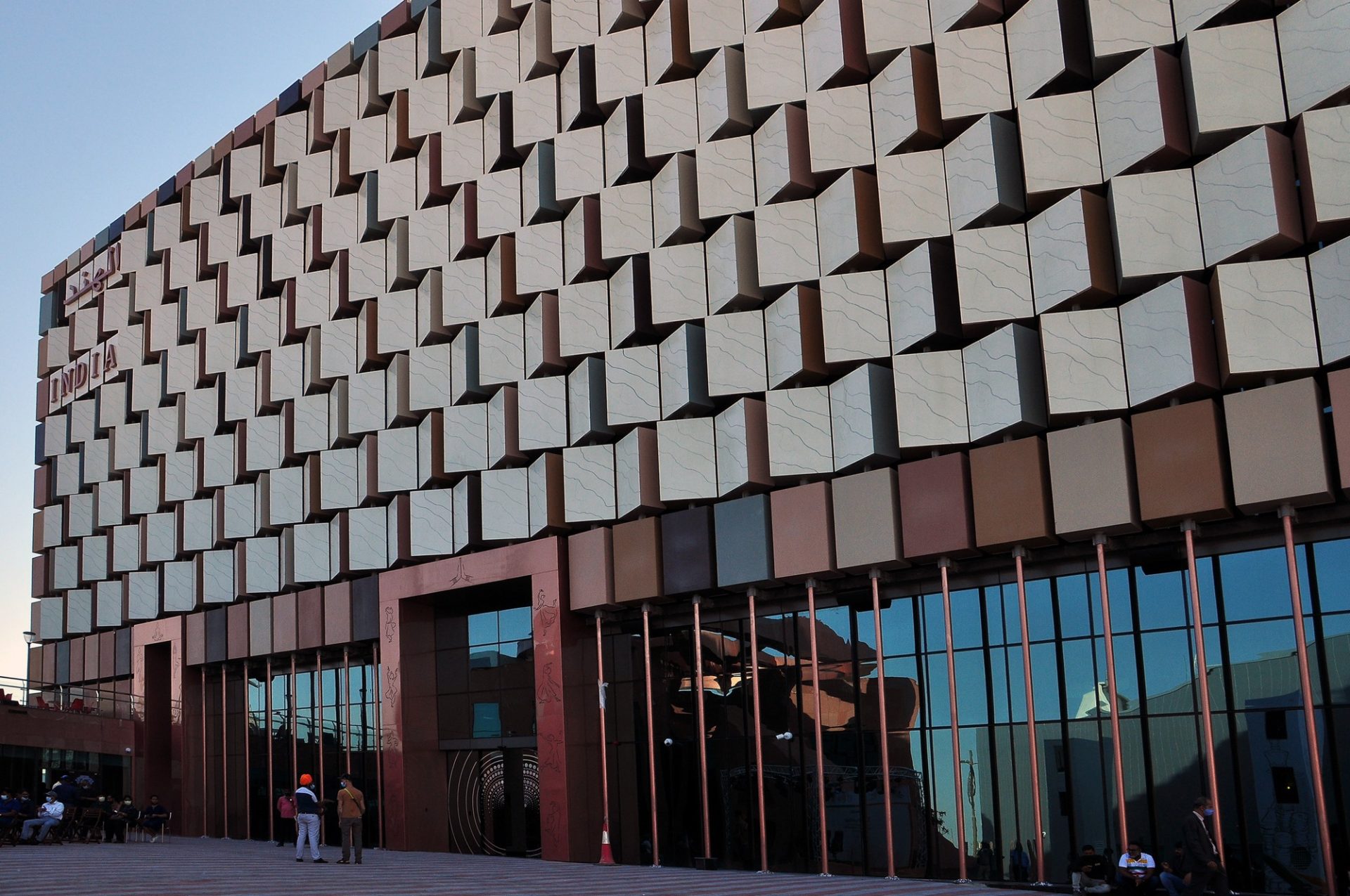 “Architecture is an amalgamation of creativity and engineering. For us, representing India on an international platform meant developing a design that creates a meaningful dialogue between the tangible and intangible aspects of the built form. This was a very unique project to work on because it is showcased on a global stage where you have an assortment of architecture from around the world. How does one capture India and its diversity into one building? Does one just make a hash of different architectural styles from the South, North, West, and East of India? Or does one make an amalgamation of their unique features using all the clichés like arches and domes, or do we do something different? These were the questions we were faced with. We felt that the best way to communicate an India on the move, the transformational aspects of the country so to speak, was to bring that dynamism to the façade. We chose to represent this using a kinetic façade with rotating elements that can become a blank canvas given to India to tell its story. Weaving technology and craftsmanship together, we were able to bring forth a concept which befittingly capsules the diverse cultures of our country whilst captivating the visitors through enthralling storytelling,” says Kukreja.
“Architecture is an amalgamation of creativity and engineering. For us, representing India on an international platform meant developing a design that creates a meaningful dialogue between the tangible and intangible aspects of the built form. This was a very unique project to work on because it is showcased on a global stage where you have an assortment of architecture from around the world. How does one capture India and its diversity into one building? Does one just make a hash of different architectural styles from the South, North, West, and East of India? Or does one make an amalgamation of their unique features using all the clichés like arches and domes, or do we do something different? These were the questions we were faced with. We felt that the best way to communicate an India on the move, the transformational aspects of the country so to speak, was to bring that dynamism to the façade. We chose to represent this using a kinetic façade with rotating elements that can become a blank canvas given to India to tell its story. Weaving technology and craftsmanship together, we were able to bring forth a concept which befittingly capsules the diverse cultures of our country whilst captivating the visitors through enthralling storytelling,” says Kukreja.
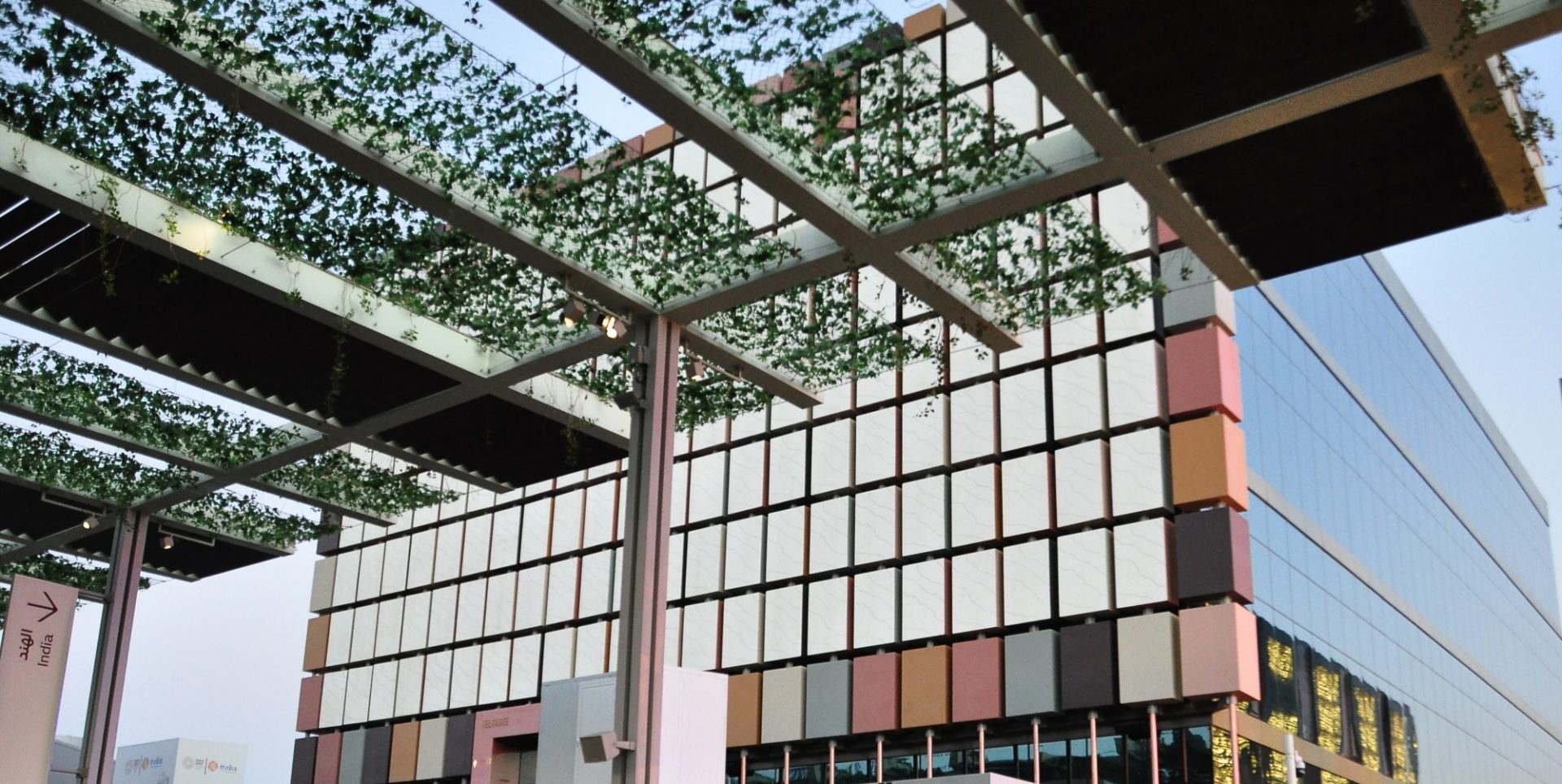 The façade comprises 600 individual blocks that move using kinetic architecture. The design also celebrates India’s 75 years of Independence. Through 75 identified stories, the façade would engage visitors through the charm of storytelling through the day – familiarising them with the history, geography, and literature of the country. In the evening, the façade will turn into a vibrant show with sound, light, and projections, almost as if hosting a festival. The awkward shape of the trapezoidal site has been designed to create visual memorabilia and utilise the land to its full potential.
The façade comprises 600 individual blocks that move using kinetic architecture. The design also celebrates India’s 75 years of Independence. Through 75 identified stories, the façade would engage visitors through the charm of storytelling through the day – familiarising them with the history, geography, and literature of the country. In the evening, the façade will turn into a vibrant show with sound, light, and projections, almost as if hosting a festival. The awkward shape of the trapezoidal site has been designed to create visual memorabilia and utilise the land to its full potential.
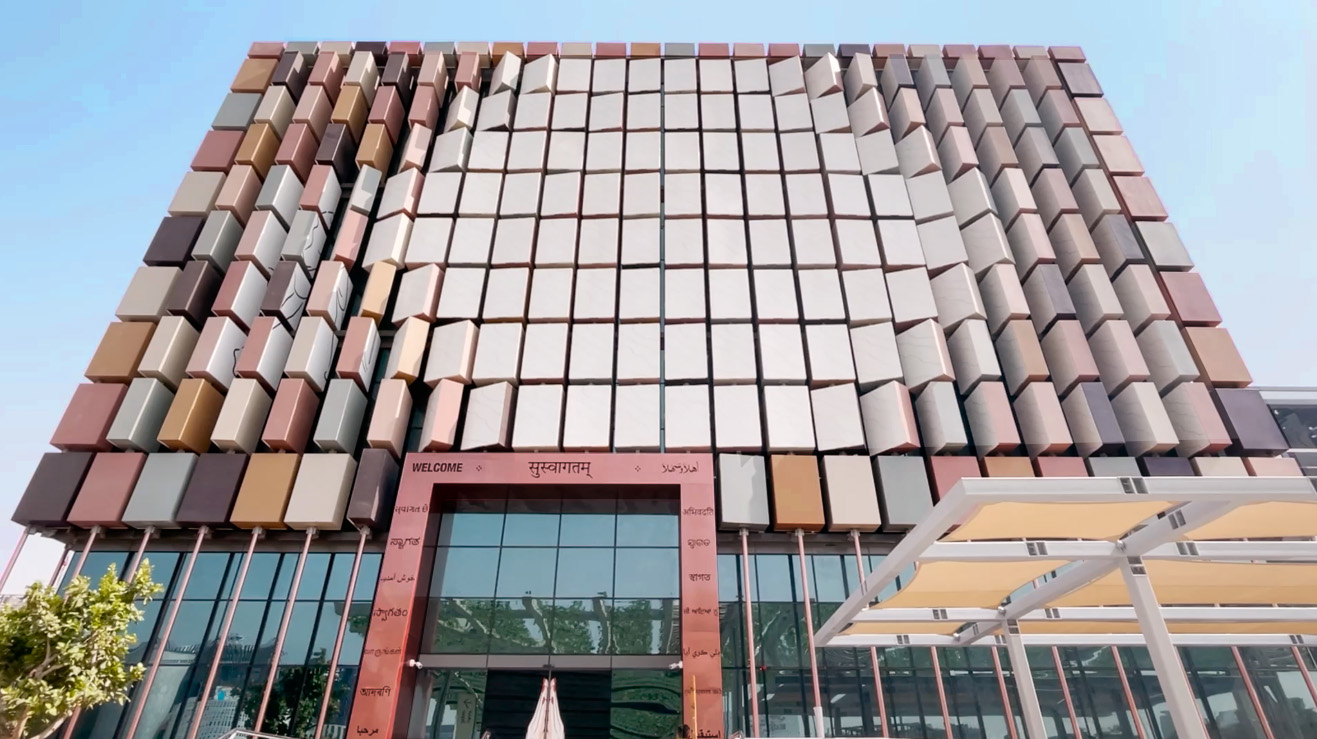 “Through the Pavilion, we hope to pay a homage to the cultural multifariousness of our country whilst nurturing the idea of India as a pool of opportunities for investment and collaboration. As one of the fastest-growing nations in the world, the design of the Pavilion imbibes the theme of ‘India on the move’,” he says.
“Through the Pavilion, we hope to pay a homage to the cultural multifariousness of our country whilst nurturing the idea of India as a pool of opportunities for investment and collaboration. As one of the fastest-growing nations in the world, the design of the Pavilion imbibes the theme of ‘India on the move’,” he says.
The planning of the site is such that it condenses the vastness of India’s culture and cityscape within it. Different design elements such as the radiant sun-dial and the elaborate amphitheatre are seamlessly tied into a single harmonious unit.
“The pavilion is the tallest at the Expo. We used sustainability as one of the key design features, integrating climatological influences of the region with technology. Movement in the façade helps control factors such as sunlight and wind inside the Pavilion which is helpful in regulation of natural daylight and ventilation. We also incorporated skylight in the design to optimise natural daylight in the interiors. Using solar panels installed on the terrace, we maximised the benefit from Dubai’s harsh sunlight. The chakra is designed using steel construction with modular steel members that can be recycled,” says Kukreja.
The interior design makes the journey inclusive and interactive for the visitors by employing the use of the latest cutting-edge and innovative technologies. The visitors will get to witness both, physical exhibits as well as immersive digital content which would showcase various sectors in the thriving Indian economy. Such close integration of creative and technical approaches is exhilarating, constructing an imaginative atmosphere for the visitors.
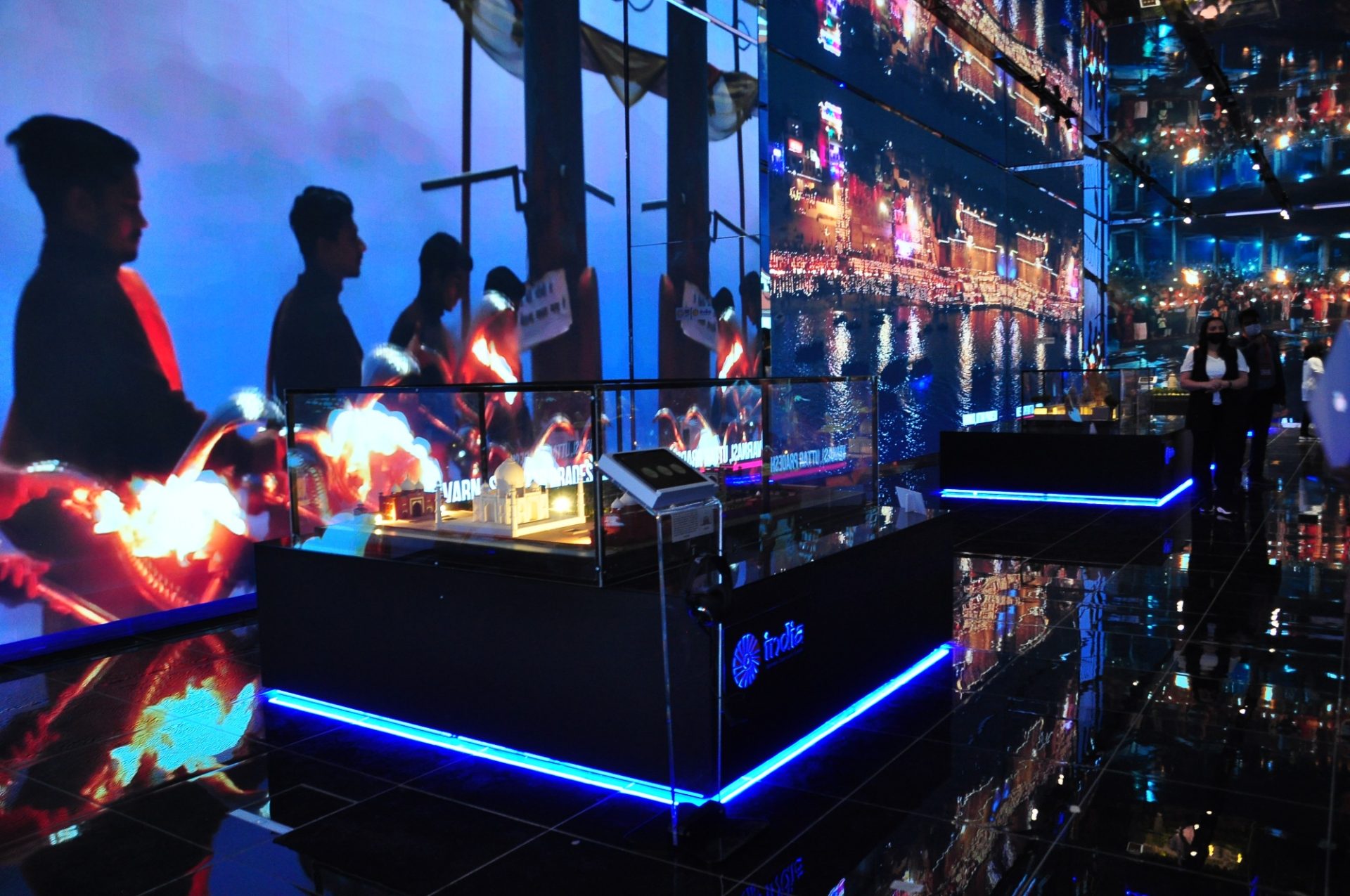 Programmes such as Make in India, Digital India, Skill India, and Start-Up India campaigns would be featured as the key highlights, displaying the country’s capabilities at an international level. The interior fit-outs have been designed by Muse International. The India experience inside the pavilion is designed under eleven themes. As one enters the building, one is fascinated by the starry space – guiding them through India’s journey in space exploration. As a land of tranquility and healing, live yoga performers will have a projection of mandalas behind them. A walk inside giant radium will help the visitors to understand the many benefits of Ayurveda. On the first floor, the colours of India in an immersive environment are showcased with LED walls enveloping the visitors in a heritage experience. Mesmerising installations also help exhibit India’s diverse culture. The second floor will display India as a land of endless opportunities. A state-of-the-art theatre hall will be open for meetings, conferences, cultural shows, reception as well as film screenings.
Programmes such as Make in India, Digital India, Skill India, and Start-Up India campaigns would be featured as the key highlights, displaying the country’s capabilities at an international level. The interior fit-outs have been designed by Muse International. The India experience inside the pavilion is designed under eleven themes. As one enters the building, one is fascinated by the starry space – guiding them through India’s journey in space exploration. As a land of tranquility and healing, live yoga performers will have a projection of mandalas behind them. A walk inside giant radium will help the visitors to understand the many benefits of Ayurveda. On the first floor, the colours of India in an immersive environment are showcased with LED walls enveloping the visitors in a heritage experience. Mesmerising installations also help exhibit India’s diverse culture. The second floor will display India as a land of endless opportunities. A state-of-the-art theatre hall will be open for meetings, conferences, cultural shows, reception as well as film screenings.
 The India Pavilion amplifies the country’s position on the global map while projecting the Indian story in a global narrative, believe the architect, though the structure looks quite unimpressive in the initial glimpse.
The India Pavilion amplifies the country’s position on the global map while projecting the Indian story in a global narrative, believe the architect, though the structure looks quite unimpressive in the initial glimpse.
Project Details
Location: Dubai, UAE
- Site: 1.2 acres
- Built-up area: 1, 00, 000 sq. ft.
- Year of completion: 2021
- Principal Architect: C P Kukreja Architects
- Project Management Contract (PMC): NBCC DWC-LLC
- Business Facilitators: Federation of Indian Chambers of Commerce & Industry (FICCI)
- Client/ Owner: Ministry of Commerce and Industry, Government of India
- Interior fit-outs: Muse International
- Digital Content curation: Moving Pixels


